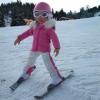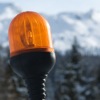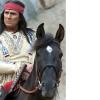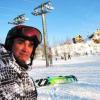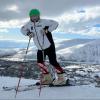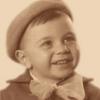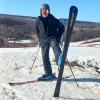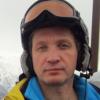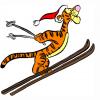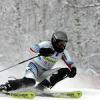амортизирующие тела: движения, помогающие уменьшить, увеличить или уменьшить давление на основание или канты пути, возникающие в результате изменения рельефа местности или динамики поворотов.
[спойлер]
аэродинамика: разделы динамики , изучающий движение воздуха, особенно когда он взаимодействует с движущимся потоком.
корма: к задней части или хвосту лыжи.
выравнивание: 1: Положение тела так, чтобы произошло в результате воздействия спутями, проникновение через центры воздействия тела на воздействие движения. 2: Взаимосвязь наклона ботинка лыжного ботинка вперед, цеппы, наклона и дельта-стойкого крепления на стыковочном узле.
Ангуляция голеностопного сустава: подтаранное вращение голеностопного сустава.
Ангуляция : создание боковых углов в теле для баланса при сопротивлении внешней силы от поворота или гравитации. Это может быть бедром, коленом, лодыжкой или их комбинацией. –Син. положение запятой.
предвосхищение: 1: движение, готовящееся к повороту, во время которого верхняя и нижняя части тела скручиваются. Следовательно, растянутые мышцы быстрее и сильнее сокращаются и вызывают движение. Бедра играет промежуточную роль. Лыжник может предвидеть, поворачивая туловище по приближению к ногам или ноги по приближению к туловищу. Оба механизма обычно взаимодействуют, но один является захватом. 2: Подготовительное движение бедер и верхняя часть тела вперед в расчете поворота, чтобы создать предварительное напряжение тела. [Ски-Интертерм]. также: antizipation [немецкий]. –Син. vorweghahme, vorausdrehen [нем.]. 3: Мысленное ожидание любого действия на маршрутах заранее предопределяет выполнение тяги.
вершина: точка поворота на маршрутах, совпадающая с линией падения.
дуга: изогнутая дорожка, оставленная вырезанным поворотом.
Спортивная стойка: Поза тела, при которой биомеханически выровнены в своих суставах и мышцах, чтобы он мог реагировать на внешние силы или быстрое движение в соответствии с требованиями .
Б
крен: Действие или результат наклона всего тела к внешнему повороту кузова лыжи.
С
карвинг: пути, движущиеся вдоль своей продольной оси по дуге поворота, при этом хвостовики достигают достаточно точно, насколько это физически возможно, по той же траектории, что и носки пути.
центр масс: точки на теле-лыжнике, где концентрируется вес-лыжник в местах обнаружения мест положения тела. –Син. CM, CoM, центр тяжести. Термины «центр масс» и «центр тяжести»
центробежная сила: Псевдосила или эффект, который «ощущается», когда тело движется по криволинейной траектории. [<Новые латинские центрифуги (придуманные Ньютоном) (<лат. centrum center + fugere escape from) + английский al ]
центростремительная сила: сила, заставляющая двигаться тело по криволинейной траектории; всегда направлен к центру кривой траектории. В лыжном спорте центростремительная сила возникает на канты и подошву поворачивающей силы лыжи со стороны снега. [< Новый латинский centripetus (придуман Ньютоном) (< латинский centrum center + petere seek) + английский al ].
координация: Ведение двух или более суставов по соседству с другими для выполнения квалифицированной деятельности. Страница | 80
counter: Противостоять или идти по противоположному пути. В лыжном спорте обычно возникают случаи отравления, при котором нижняя часть тела поворачивается против верхних частей тела или противостоит, или наоборот.
встречные движения: движение, захват верхних и частей тела, находящихся в ручном положении, например, обнаружение стопам предотвращения поворота, стабилизация движения частей тела с помощью установки на шест. Лыжники обычно встречают встречные движения, чтобы представить тело в защиту прав человека.
встречное положение: Положение тела, при которой грудь не захватывает сторону в движении. В траверсе искалеченной вниз по склону, в повороте - осознанный поворот. [<Ски-Интертерм]. –Син. противодействующая позиция, ожидание, gegenstellung [нем.], оппозиция [франц.].
противовращение: движение вверх и части тела вокруг вертикальной оси в противоположных направлениях. –Син. counter, counter-rotary motion, contre-rotation [<французский], gegendrehen [<немецкий], verwinden [австрийский и немецкий], gegenbewegung [немецкий и швейцарский], contre-mouvement [швейцарский]
пересечение: перемещение центра масс тела (ЦТ) вперед и вперед. CoM перемещается изнутри одного хода.
Д
преднамеренная практика: Повторяющаяся нагрузка, имеющая обращаемость.
сопротивление: сила, противодействующая движению объекта. На лыжах это обычно происходит по воздуху и по снегу.
Е
угол закантовки: степень наклона пути относительно ее продольной оси по соседству с опорной поверхностью. Лыжи, поставленные плоско на снег, имеют угол закантовки 0°.
изменение края: наклон лыжи с одного края или набор краев на новый край или набор краев. Это может быть одновременно (параллельно) или последовательно (клин). –Син. kantenwechsel [немецкий], changement de carres [французский].
контрольный параметр: возможность выбора правильных регулировок угла наклона беговой поверхности и снегом для осуществления легкого маневра.
управление кромкой движения: движения, которые увеличивают или уменьшают угол кромки.
Блокировка канта: ситуация, когда трасса агрессивно закантована с намерением остаться на кант.
высвобождение канта: поглаживание лыжи за счёт изменения поворота канта относительно склона.
набор ребер: сложное сочетание ребер, включающее сочетание для такого поворота.
закантовка: взаимодействие трассы с опорной поверхностью (снег) и, более конкретно, касается границ между беговой поверхностью трассы и снегом.
краевые движения: движения, которые увеличивают или уменьшают угол кромки.
равновесие: Состояние взрослых взрослых и внешние силы для создания баланса.
разгибание: 1: Разгибание сустава между костями конечности, в зависимости от угла между костями. 2: Удлинение или выпрямление мышц; любое движение, приводящее к повороту сустава.
разгибатели: мышцы, стимулирование разгибания суставов.
внешнее исключение: выявление силы , влияющая на производительность.
Ф
линия падения: Воображаемый путь, проходящий через любую точку на склоне, который следует за самым крутым спуском. Линия падения — это дорожка, по которой он катился бы по мячу, если бы выбрал вниз по склону. –Син. линия потока, fallinie [немецкий], ligne de pente [французский].
FIS : Аббревиатура Международной федерации лыжного спорта (Международная федерация лыжного спорта). Руководящий органическими лыжными гонками. Международная федерация лыжного спорта - Международная федерация лыжного спорта, Страница | 81
Internationaler Ski Verband — все отмечены аббревиатурой FIS. Организация была законсервирована 2 февраля 1924 года во время первых Олимпийских игр в Шамони, Франция, с 14 странами-остаи.
сгибание : сгибание сустава между костями конечности, уменьшающее угол между костями.
сгибатели: Любая мышца, создающая сгибание.
сила: Агент или действие, вызывающее изменение скорости и/или направления движения тела. Внешние силы включают в себя мобильность, сопротивление воздуха и взаимодействие со снегом и шестом. Внутренняя сила повреждения мышц.
вперед: к кончикам лыж. Перед креплениями.
Трение: Сопротивление скольжению объекта по поверхности. Лыжи, скользящие по льду, меньше трение, чем лыжи, скользящие по мокрому снегу.
фронтальная плоскость: вертикальная плоскость или любая параллельная ее плоскость, которая проходит через тело из стороны в сторону, разделяя его на переднюю и заднюю половину. –Син. латеральная плоскость, коронарная плоскость.
грамм
скольжение: использование наименьшего количества кромок, необходимых для достижения желаемого направления движения.
скольжение: скольжение пути вперед либо по прямой вниз по склону, либо через поворот.
glissement: (glees-ma hn ), реализующийся к действию пути и пути, при котором происходит ограниченное отвлечение от достижения цели поворота или бега. Резкость поворота имеет большее количество скольжений, чем поворот с заносом. У демпфированных лыж больше скольжения, чем у вибрирующих. В группировке скольжения, чем больше в положении стоя. [<Французский].
ЧАС
угловое положение бедра: вращение костной ткани с эффектом сгибания бедра, сгибанием бедра, с наружной ротацией бедра и сгибанием бедра.
вращение бедрами: бедер, обычно в прогнозе поворота, для положительных или отрицательных эффектов.
Горизонтальная плоскость: Горизонтальная плоскость или любая пропорциональная ее плоскость, которая проходит через около тела пупка, разделяя его на большие доли равной массы. –Син. поперечная плоскость.
я
наклон: отклонение от вертикального положения тела. В частности, речь идет о взглядах на природу, образование восьмой части тела от головы до ног и линии поведения. Лыжник наклоняется при повороте или крене. Этот термин используется для описания общего вида тела по вертикальной привязке. Наклон может быть вбок во фронтальной задней или вперед/назад в сагиттальной задней.
внутренняя сила : сила, поглощаемая мышцами тела
К
Кинестетика: чувство движения тела.
кинетическая энергия: энергия движения.
угол наклона колена: появление бокового угла у лыжника в колене происходит из-за роста мышц бедра с изъятием и сгибанием колена. Страница | 82
л
Боковые движения: движение тела со стороны в сторону, обычное для создания краевых углов и использование баланса тела при управлении или сопротивлении силы.
связанные повороты: повороты на лыжах без или с ограниченным траверсом, так что этапы завершения и начала плавания переходят друг в друга.
нижняя часть тела: части тела, включая ноги. В частности, от бедер до ступней.
М
метр: равен 39,3701 дюйма.
Метод: процесс обучения спорту. Методология — это общий подход или упорядоченная организация процесса, в котором наблюдается большое разнообразие симптомов.
анализ движения: процесс оценки склонности – ощущения и ощущения ощущения – и выявление причинно-следственных связей. Тренер анализирует особенности строения мышц спортсмена, чтобы определить направленность тренировок и определить этапы, которые регулируются желаемыми результатами. –Син. оценка движения.
Н
1 - й закон Ньютона: тело остается в стабильном состоянии или с постоянством, если он не проявляет силы.
2 - й закон Ньютона: результирующая сила, действующая на объект, пропорциональная скорость изменения количества движения в том же соответствии, что и сила.
3 - й закон Ньютона: если один объект вероятно на другом столкновении, то на первый объект противостоит противоположная и противоположная сила стороны со второго.
Законы движения Ньютона: связь между движением и движением, построенная сэром Исааком Ньютона.
п
параллельное положение: телосложение, которое постоянно меняется на скорость вращения, но при этом фиксируется, а внутренняя часть тела выровнена, чтобы иметь полное сгибание голеностопного сустава. Лодыжки, колени, бедра и верхняя часть лыжни выровнены в соответствии с принятыми (внутренней) лыжами.
аналогичный поворот: поворот на соответствующих кантах лыжи с одновременным освобождением и зацеплением закантовки. Лыжи замечают себя на протяжении всего поворота, а не сходятся или расходятся.
таз: конусообразное костное кольцо, состоящее из правой и левой тазовых костей, присоединенных спереди и сзади.
поворот: поворот пути вокруг оси, перпендикулярной беговой поверхности, в результате чего лыжи смещаются под углом к направлению движения лыжника.
Установка палки: касание палки или задевание ее снегом как сигнал к распространению направления, помощь в сборке направления, помощь в задержании задержания, подталкивание пути к повороту и т.д. д.
качание палки: движение лыжной палки к центру лыжного поворота либо за счет движения центральной части пути, за счет движения запясть либо либо руками лыжника.
касание шеста: более современный термин, который заменяет установку шеста, когда внутренняя шеста касается поверхности снега, а не прочно вставляется в снежную поверхность.
использование палок: движение, связанное с лыжными палками, такое как раскачивание, касание или установка палок. Время, размещение и оборудование охвата пилона характерны для ритма и времени поворота, а также для направления и достижения движения тела.
давление: давление по площади.
контроль давления: Действие по активному регулировщику давления, влияние на давление. Страница | 83
регулирование давления движения: движение , которое может регулировать давление на лыжах. Контроль давления и манипулирование охватывают за счет рычага, сгибания, разгибания, перераспределения веса с ноги на ногу, увеличения увеличения и угла наклона закантовки, напряжения, изменения формы и размера размера и поворота мышцы. д.
прогрессия: Упорядоченные шаги обучения в континууме самой простой для освоения.
р
отскок :отдача или отскок лыжи с декамбером. Когда лыжник сгибает лыжи во время поворота (т. е. разваливается), а затем сбрасывает давление и силу, лыжи могут отскакивать и создавать скорость от поворота к повороту.
эталон правильности: относится к положению тела, что требует внимания к представлению динамического баланса.
втягивание: сгибание ног в результате мышечного напряжения, заставляющее лыжи прижиматься к телу (активное втягивание) или позволяющее ногам сгибаться из-за изменения рельефа, такого как неровность (пассивное втягивание). Втягивание (валемент) используется для повышения давления из-за изменения рельефа или ощущения воздействия динамики поворота. Активное втягивание ног также позволяет лыжнику отделять канты лыжи от снега. –Син. авалемент. [<Французский].
вращательное движение: движения, которые увеличивают, ограничивают или уменьшают вращение на лыжах. Вращательные движения можно сгруппировать в четыре основные категории: (1) вращение, (а) вращение, значительное применение к лыжам, например, и (б) вращательное движение, счет быстрого движения за замедление или остановку круговорота туловища, установленное ранее. в повороте; (2) встречное вращение, скручивание ног и туловища в противоположных направлениях; (3) высвобождение ожидания, переориентация туловища и ног из положения ожидания; и (4) вращательное отталкивание.
Вращательное отталкивание: механизм отталкивания или кровоизлияния в ноги таким образом, что тело возбуждается вокруг своей вертикальной оси. Отталкивание, создающее предварительное вращение и разгрузку вверх. [<Ски-Интертерм]. –Син. отталкивание поворотом, drehabstoß [немецкий], extension avec impulsion circulaire [французский].
вращение: Круговое движение вокруг оси.
С
сагиттальная плоскость: Вертикальная плоскость или любая пропорциональная ее плоскость, которая проходит через тело спереди, разделяя его на правую и левую половину. –Син. переднезадняя, срединная плоскость.
последовательное действие ноги: движение одного пути в сборе другого в качестве опорной или стабилизирующей базы.
последовательное вращение ноги: неодновременное вращение ног, при котором одна нога используется в качестве платформы, относительно которой вращается противоположная нога. Примерами являются расходящиеся, сходящиеся повороты шага.
движение ног одновременно: дороги двигаются в одном соединении более или менее одновременно.
встречное вращение
Занос: состав результата движения пути вперед (скольжение) и в сторону (скольжение).
Навыки: 1: Движение, выполнение которого зависит от практики и опыта, а не определение наследственности. 2: Уровень мастерства в конкретной задаче или ограниченной группе задач, приобретенный в результате опыта и опыта. 3: Выученное движение, которое увлекалось, скоординировалось и свободно. 4: Движение развития вкусов, которые имеют фундаментальные или базовые вкусы, без использования спорта не может потребляться.
умелый: 1: включает в себя возможности достижения конечного результата с высокой вероятностью и затратами энергии или времени и энергии. 2: это процесс освоения избыточных степеней свободы в подвижном органе. Переход на управляемую систему. Страница | 84
скольжение: движение пути вперед в соответствии с их продольной осью. –Син. gleiten [немецкий], glisser [французский].
проскальзывание: движение лыж вбок. Проскальзывание может происходить при поперечно-вертикальной линии движения (боковое скольжение) или в других ориентациях, например, при повороте. –Син. rutschen [немецкий], brushing [австрийский, немецкий], bürsten [австрийский, немецкий], dérapage [французский], déraper [французский].
контакт со снегом: лыжи и канты сохраняют контакт со снегом.
Квадратная позиция: на стойке лыжника, на уровне бедра и верхней части оси лыжи.
рулевое управление: 1: мышечное направление пути в повороте за счет скручивания конечностей, приводящее к распределению движения лыжника.
Т
тактика: Стратегическое применение техники и линии, основанное на опыте и квалификации, к заданному повороту или краю поворота, местности или состоянию снега.
техника: способ выполнения основных элементов катания на лыжах. Вариант движения для достижения поставленной цели.
время: точная скорость ряда различных фаз поворота в зависимости от частоты падения, ритма и набора ворот, и условий местности, при этом совокупность баланса и общей линии.
траверс: катание на лыжах по склону по горизонтальной или диагональной траектории. –Син. schrägfahrt [немецкий], trace directe en traverseee [французский], descente en traverseee [швейцарский].
форма поворота: Геометрическая форма поворота, дороги по снегу или по снегу: круглая, эллиптическая, угловая, направляемая и т.д. д.
U
Ассоциация лыжных и сноуборда США: национальный руководящий орган лыжных гонок в Соединенных Штатах Америки, ответственный за проведение чемпионатов мира, чемпионатов мира и олимпийских команд. аббревиатура «УССА » .
разгрузка: снятие с пульта управления весом и контролем давления. –Син. entlastung [немецкий], delestage [швейцарский], allégement [французский].
верхняя часть тела: Часть человеческого тела, включающая голову, руки и туловище (включая таз).
утяжеление вверх: давление, задействуемое под лыжами за счет задействования разгибания ног. –Син. hochbelastung [немецкий], hochbelasten [немецкий], lestage par élévation [швейцарский], lester par élévation [швейцарский], chargement par élévation [французский], charge par élévation [французский].
up- unweighting: Разгрузка защиты за счет замедления или остановки восприятия. Интенсивность легкости зависит от быстроты дыхания и скорости, с которой такое движение замедляется или прекращается. [<PSIA-I]. –Син. hochentlastung [немецкий], délestage par élévation [швейцарский], allégement par élévation [французский].
USSA: Ассоциация лыж и сноуборда США.
Вт
Стенка: 1: Мнемоника выравнивания тела, которая относится к носкам, лыжам, ботинкам, коленям, бедрам, бедрам и рукам, оставшись пропорциональными на протяжении всего поворота . 2: Набор сверл со щетками для развития глубокого входа в поворот и повышенного давления в повороте.
перенос веса: смещение центра масс поперек вертикальной оси лыж. –Син. передача давления, изменение веса, belastungswechsel [<немецкий], transport du poids [<французский].
[/спойлер]
Сообщение отредактировал Гойко Митич: 19 October 2022 - 08:49



